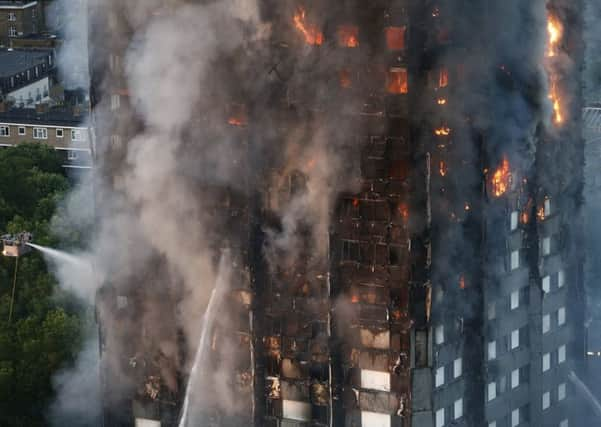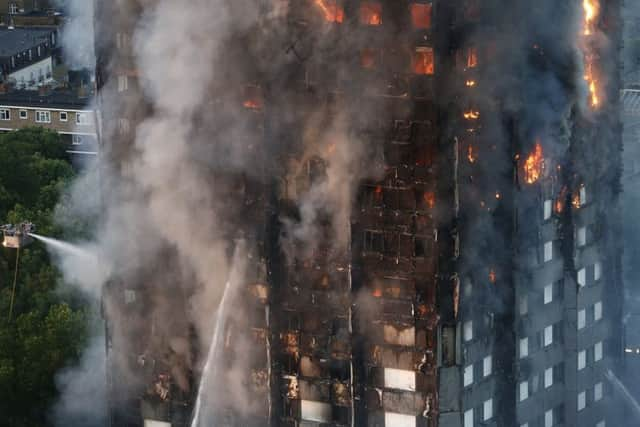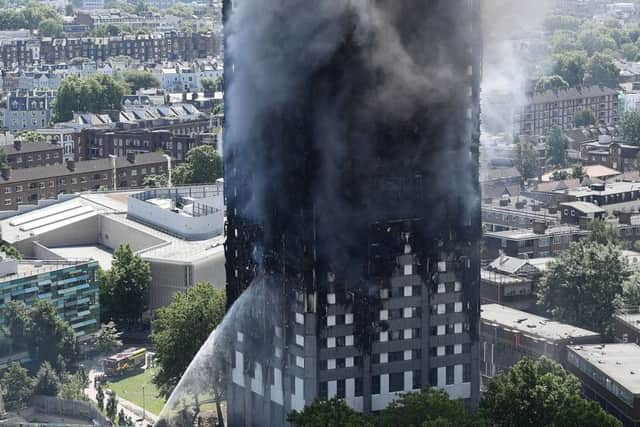Grenfell Tower fire: cladding concerns raised by MPS in 2000


The Environment, Transport and Regional Affairs Committee launched an inquiry after a blaze tore through a 14-storey block of flats in Irvine, Ayrshire, in June 1999, killing an elderly man.
It concluded that cladding should be non-combustible or not pose an unacceptable level of risk to tenants.


Advertisement
Hide AdAdvertisement
Hide AdResidents who escaped the fatal Grenfell Tower fire spoke of the cladding going “up like a matchstick”, while TV architect George Clarke said: “There’s a new cladding system put on the outsides (of the block of flats) that looks like a new skin. There’s an air gap, an insulation behind that; to me that looks like a fantastic chimney for the fire to rage around.”
London Fire Brigade said the cause of Tuesday night’s fire in north Kensington is not yet known.
London Fire Commissioner Dany Cotton said: “There will be an investigation but at this stage I do not want to speculate about the cause of the fire or what has caused it to spread in the way that it did.”


But the parliamentary report said: “We do not believe it should take a serious fire in which many people are killed before all reasonable steps are taken towards minimising the risks.
“We believe that all external cladding systems should be required either to be entirely non-combustible, or to be proven through full-scale testing not to pose an unacceptable level of risk in terms of fire spread.”
It added: “There have been few recorded incidents of serious fire spread involving external cladding, and, although in our view any loss of life in incidents such as these should be prevented if at all possible, neither have there been many deaths.”
Flammable cladding has been blamed for helping to spread severe fires elsewhere in the world, including a blaze at the Lacrosse tower block in Melbourne, Australia, in 2014. It was caused by a cigarette on an eighth-floor balcony and the quickly spread vertically up the building.


An analysis report by the Melbourne Metropolitan Fire Brigade (MFB), which described “many contributory factors”, said the first fire crews on the scene saw that the blaze had already swept up the external walls and balconies over approximately six levels and “only six minutes later, crews reported back that fire had reached the roof of the building above the 21st floor”.
Advertisement
Hide AdAdvertisement
Hide AdIt added: “The extremely vertical nature of the burn patterns to the exterior face of the wall suggest that the Alucobest aluminium cladding, along with the foam lagging and the PVC pipe of the building wall, contributed to the fire load and the rapid spread of the fire up the vertical face of the building to the floors and balcony areas located above.”
The report concluded: “Had the external wall cladding been of a non-combustible type, the likelihood of fire spread beyond the level of ignition would have been greatly reduced.”
The Lacrosse fire led to the the Victorian Building Authority, the industry watchdog, to call for a fresh audit of “hundreds” of buildings across Victoria state and new investigations into building practitioners.


Rydon, the firm that carried out the Grenfell Tower refurbishment work, said in a statement following the fire that the project “met all required building regulations”.
But a line stating that it met all “fire regulation and health and safety standards”, which was included in an earlier release, had disappeared.
Harley Facades Limited (HFL) completed the refurbishment work to Grenfell Tower which included installing the exterior cladding. The company described the Aluminium Composite Material (ACM) panels as a commonly used product and stated that HFL does not make the panels.
HFL managing director Ray Bailey said: “This is an incredibly tragic incident. Our thoughts are with the residents and their families who have suffered such a personal loss.
“We will fully support and c-operate with the investigations into this fire. There will be many questions about this whole incident and so you will appreciate that it would not be appropriate for us to comment or for others to speculate on any aspect of fire or it causes in advance of these inquiries.
“At this time, we are not aware of any link between the fire and the exterior cladding to the tower.”
